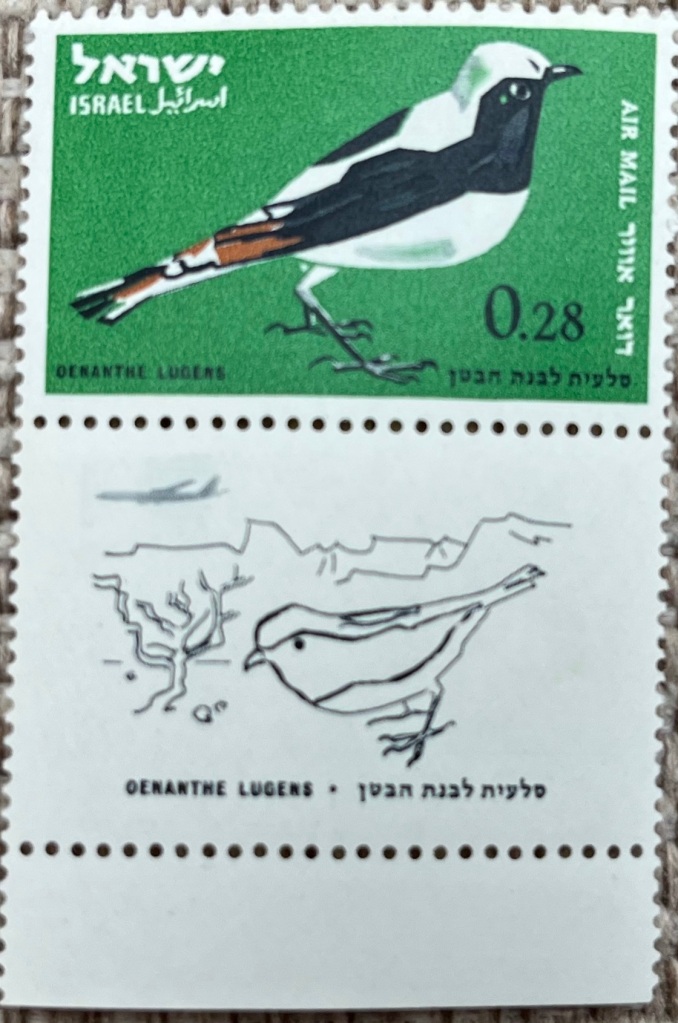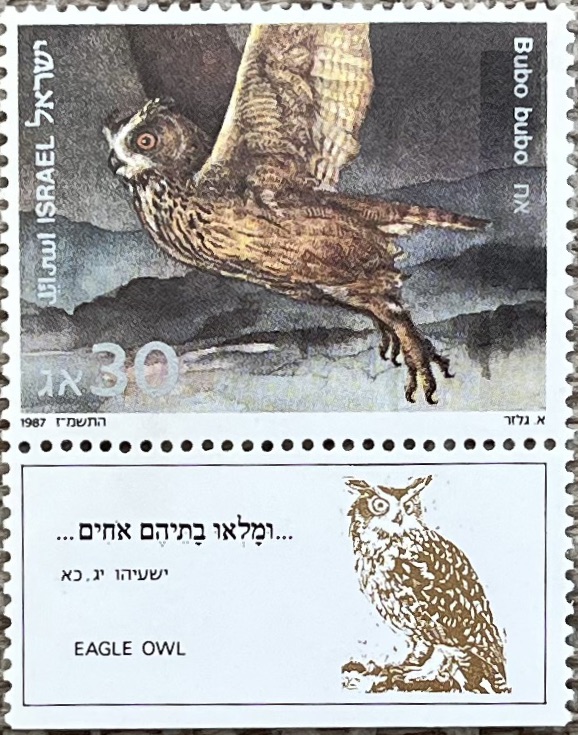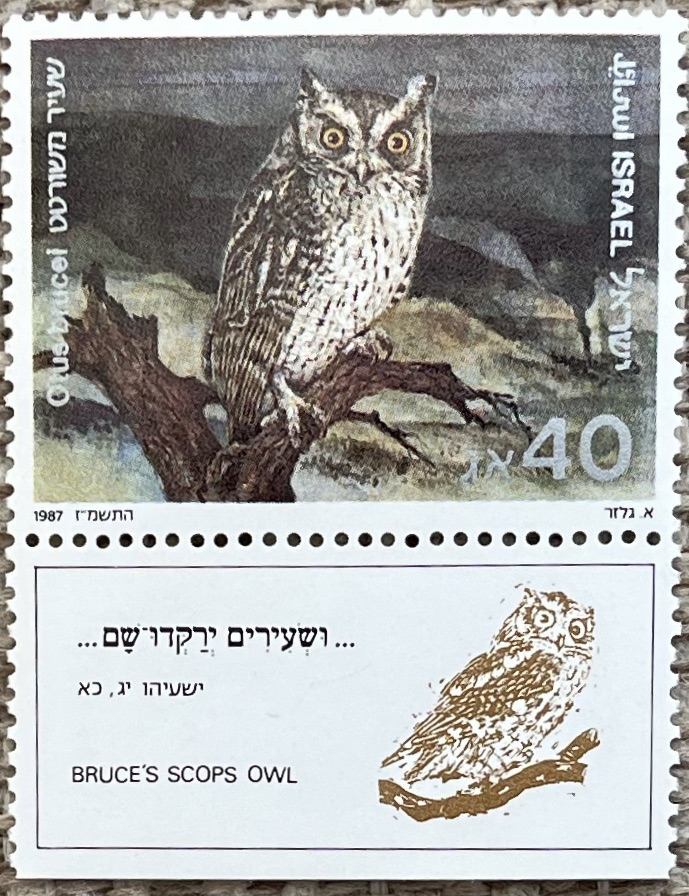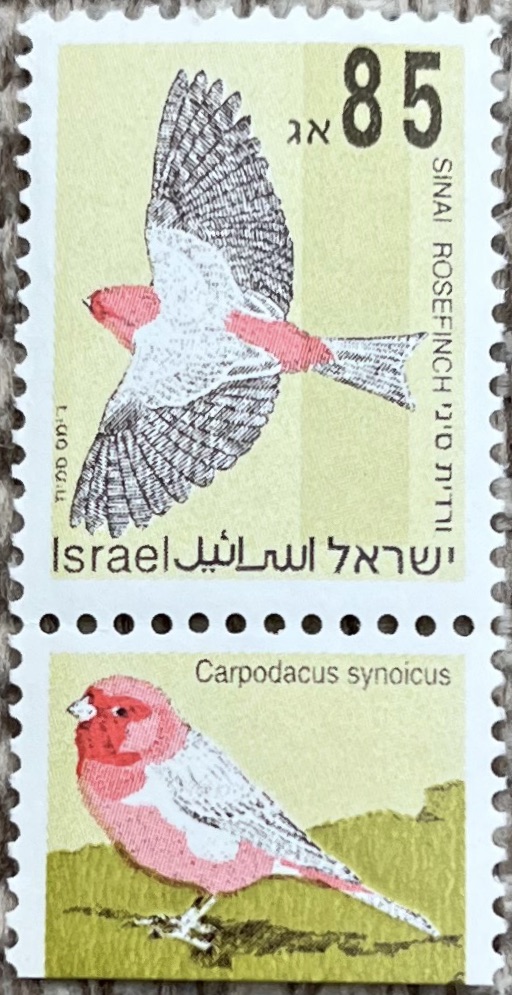
…catching the worm…

This is the second post about the birdlife of Israel. The first was published in October 2022, and entitled I. Birds on Israel postage stamps. Readers may wish to look at it in conjunction with this visit to the blog.
Israel’s geographical location adjacent to three continents has provided the country with a very varied bird life – birds inhabiting urban, coastal, plain, lake, marshland, desert, and upland terrains – and both wintering birds, and breeding species.
Since 1963 and the issue of a set of airmail stamps between February and October that year, Israeli birdlife has been celebrated on the country’s postage stamps over every succeeding decade.
On 25 April 1963, the airmail series was added to with 5 Agorot, 20 Agorot, and 28 Agorot values, supplementing the stamps issued on 13 February that year – the 55 Agorot, 70 Agorot, and 1 Israeli Pound values featured in the earlier birds blog post (October 2022).
The 5 Agorot stamp (below) was illustrated with the Sinai Rosefinch (Erythrena sinoica) nesting in rocks in the southern Negev. The finch is endemic in Israel and Jordan.

The 20 Agorot value showed the Smyrna Kingfisher (Halcyon smyrnensis) resident in northern and central Israel (shown below).

Also issued in April 1963 was the 28 Agorot value (below) which featured the Mourning Wheater , or Oenanthe lugens (of the Chat family), found in the stones and rocks of Judea and the Negev, where it nests in rock-clefts. Chats are closely related to the thrush.

On 14 October 1975, a set of three stamps (shown below) designed by W. Ferguson were issued to profile Israels protected wild birds – in this case ‘red listed’ wading birds (waders) whose numbers had been drastically reduced and in danger of destruction.



Biblical birds were again featured in Israeli stamp issue on 24 February 1987 – as they had been in 1985 – but this time showing Owls (Strigiformes). Designed by A. Glaser, the three stamp set showed the Eagle Owl, Bruce’s Scops Owl, the Barn Owl, and Hume’s Tawny Owl.





Designed by J. Smith and first issued in 1992 with later printings, a definitive series of stamps featuring songbirds came out. In the blog post of October 2022, the 0.10 NIS, the 0.20 NIS, and 0.30 NIS values were shown. Below, the 0.50 NIS, the 0.85 NIS, and the 0.90 NIS values appear, illustrated with the Palestinian Sunbird, the Sinai Rosefinch, and the Swallow.



In the creation of this second post about Israel’s birdlife on postage stamps, the following resources were utilized: (1) the website of the Israel Philatelic Federation
